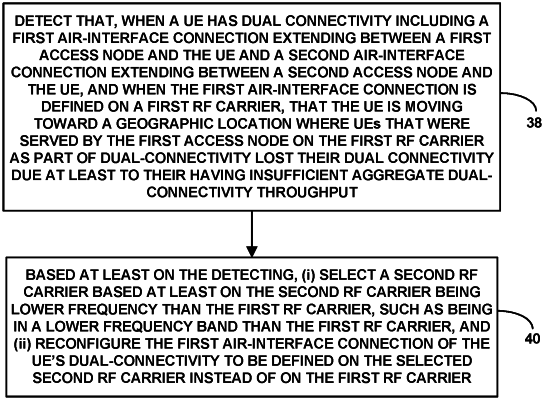| CPC H04W 36/0069 (2018.08) [H04W 36/08 (2013.01); H04W 36/305 (2018.08)] | 20 Claims |

|
1. A method operable in a wireless communication system including a first access node and a second access node, the method comprising:
detecting, when a user equipment device (UE) has dual connectivity including a first air-interface connection extending between the first access node and the UE and a second air-interface connection extending between the second access node and the UE, and when the first air-interface connection is defined on a first radio frequency (RF) carrier, that the UE is moving toward a geographic area where UEs that were served by the first access node on the first RF carrier as part of dual connectivity lost their dual connectivity due at least to their wireless-communication performance, wherein losing dual connectivity comprises transitioning from having dual connectivity to having standalone connectivity; and
based at least on the detecting, (i) selecting a second RF carrier based at least on the second RF carrier being lower frequency than the first RF carrier and (ii) reconfiguring the first air-interface connection of the UE's dual connectivity to be defined on the selected second RF carrier instead of on the first RF carrier.
|